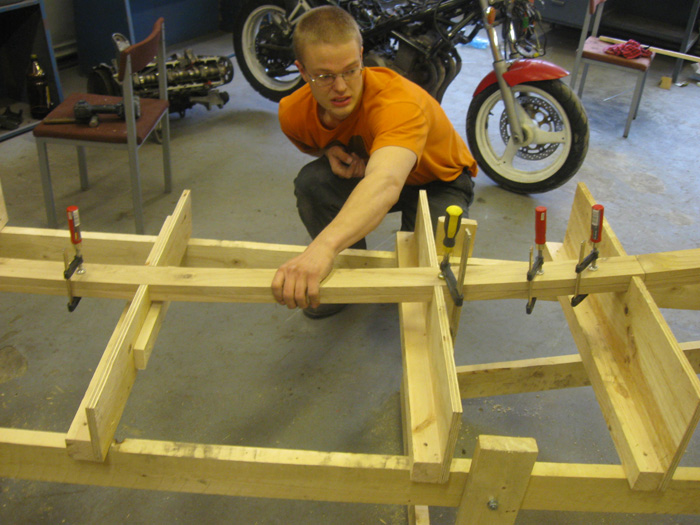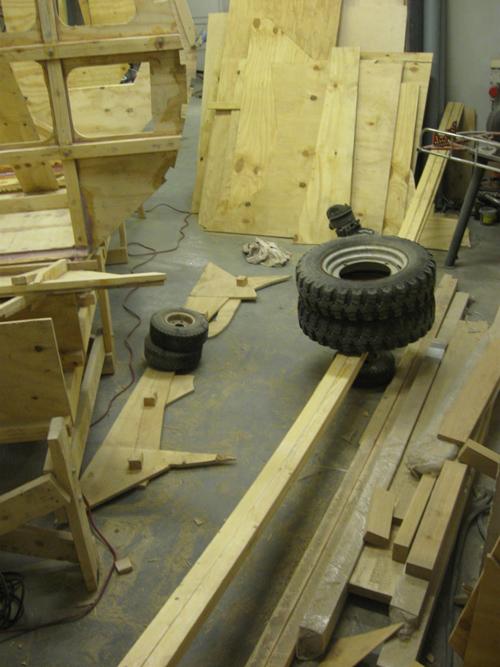We are using European oak and local pine/spurce for the construction.
Finding the softwood (spruce and pine) was no problem. Supermarkets sell them in bulk, though that is not the place to buy your timbre (more on that below). The main difficulty was finding a place that sells more or less dry and bevelled hardwood. The solution – ask people that know, eg. your local hobby shipbuilders. We found a little neat company outside of town that had all the oak we needed. They even brought it to our garage, wrapped in plastic foil.
A few notes on oak
Te reason to use oak in the keel and floor timbre is that oak is simply stronger. Also it rots slower than softwood. Oak probably rots faster than marine plywood, but marine plywood is not sold in a 10 cm diameter bulk.
Oak is an interesting material in the aspect of developing cracks. If you bend a piece of oak too sharp without steaming it first, then the piece will develop cracks. These run deep, as if the tree had crystalline structure (like a crack in glass). So, if possible, steam your oak before serious bending. That aside, oak bends very well.
Also, oak has a nice finish when varnished.

Uku holding on to the keelson laminate, all oak. No steaming needed here, the bend is not that great.
A few notes on spruce/pine
Get the wood from a lumbermill, not a “tool market” or wood warehouses of the same category. Timbre in the marketplaces is mostly kiln dried and is therefore more brittle than the “forest dry” wood you’ll get in a mill. Classical boatbuilders always buy their wood from a mill or cut it themselves alltogether. As said, kiln dried wood is brittle and breaks real easy when eg. bending stringers. Plus, lumbermill timbre is cheaper.
On the topic of finding knotfree wood
Knotfree wood is stronger than knotted wood. Especially when concidering stringers. Seriously knotted stringer wood will crack at the knot. There is a promise for you.
Knotfree wood is very hard to find, you might have guessed. We found some pretty decent material by sorting the assortment, both at the supermarket and at the mill. The men at the mill were kinder than those at the store, they allowed us to go trough all their material. So that is yet another reason to go to the mill. In general, try to find some boatbuilders in your area and ask them where they get their wood.


